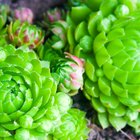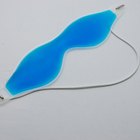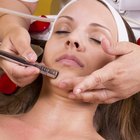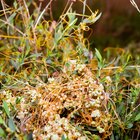
peangdao/iStock/Getty Images
The sap and leaves from aloe vera plants have a long history of medicinal use, dating back at least 2,000 years. Although it's one of the most commonly used treatments for a host of ailments, its benefits continue to be studied and debated within Western medicine. It's used orally, topically and as an ingredient in many health products.
Skin
Aloe gel has a long history of being used as a topical agent to heal wounds, burns and bruises. It's used in its pure form as well as an ingredient in hundreds of skin products, including sunblock and moisturizers. According to the National Institutes of Health, clinical studies have shown evidence that it's useful in healing burns and cuts. However, one study indicated that the gel inhibited healing of deep surgical wounds. The gel is also used to treat a number of skin conditions, including dry skin, athlete's foot, seborrheic dermatitis and herpes.
Laxative
The inner lining of the leaves surrounding the plant's sap contain strong laxative compounds. The leaves are used to produce a dried substance, called latex, which is administered orally. A dose of .04g to .17g aloe latex is recommended to treat constipation. Use is not recommended beyond seven days and should be avoided by diabetics because it may lower blood sugar.
Other Uses
Preliminary studies have indicated that aloe may be useful in the prevention of lung cancer when taken orally, and the treatment of herpes, seborrheic dermatitis, psoriasis vulgaris, lichen planus and dry skin. However, further study is needed to scientifically prove whether aloe is indeed beneficial. Aloe has also been implicated in the treatment of Type 2 diabetes, HIV and canker sores, but there's a lack of scientific evidence to support these claims.
Side Effects
Aloe is well tolerated, topically and orally. There's a slight risk of an allergic reaction when applied to the skin, which seems to be heightened if you have a history of allergies to garlic, onions, tulips, or other plants of the Liliaceae family. As with other laxatives, when taken orally, aloe latex can cause abdominal cramping and diarrhea and electrolyte imbalances. Aloe is considered to be safe for pregnant women when taken topically, but oral administration should be avoided due to possible stimulation of uterine contractions.
FDA Approval
Though aloe gel is commonly sold, products containing components of aloe latex and used in over-the-counter laxatives were ordered withdrawn from the market by the Food and Drug Administration because the manufacturers failed to provide necessary safety data. There was some concern that laxatives containing aloe latex created a tolerance, meaning increasing amounts were required to achieve the desired effect.
Related Articles

Aloe Ferox Benefits

What Are the Benefits of Extrapone ...

What Are the Benefits of Ashwagandha in ...

Aloe Vera & Seborrheic Dermatitis

Chamomile & Aloe Skin Care

List of Retinoids

Jojoba Oil Benefits

Chasteberry for Acne

Burdock Root for Acne

Arnica for Acne

The Use of Neem Juice in Skin Care as ...

Plants That Heal Wounds

What Are the Benefits of Aloe Vera & ...

Aloe Vera Gel As a Wrinkle Reducer

What Prescriptions Can Get Rid of Under ...

Chamomile Essential Oil Benefits

Can Borage Oil Help Acne?

Skin Care Products That Contain ...

Fraxel Laser Treatment Dangers

Traditional Uses of Cuscuta
References
Writer Bio
Anna Cocke graduated from CUNY with a Master of Arts in Journalism, specializing in health and medicine reporting. She has helped produce segments for the Association of Health Care Journalists on health care reform and reported on diabetes in the South Bronx. She has been writing professionally for more than seven years.
Photo Credits
peangdao/iStock/Getty Images